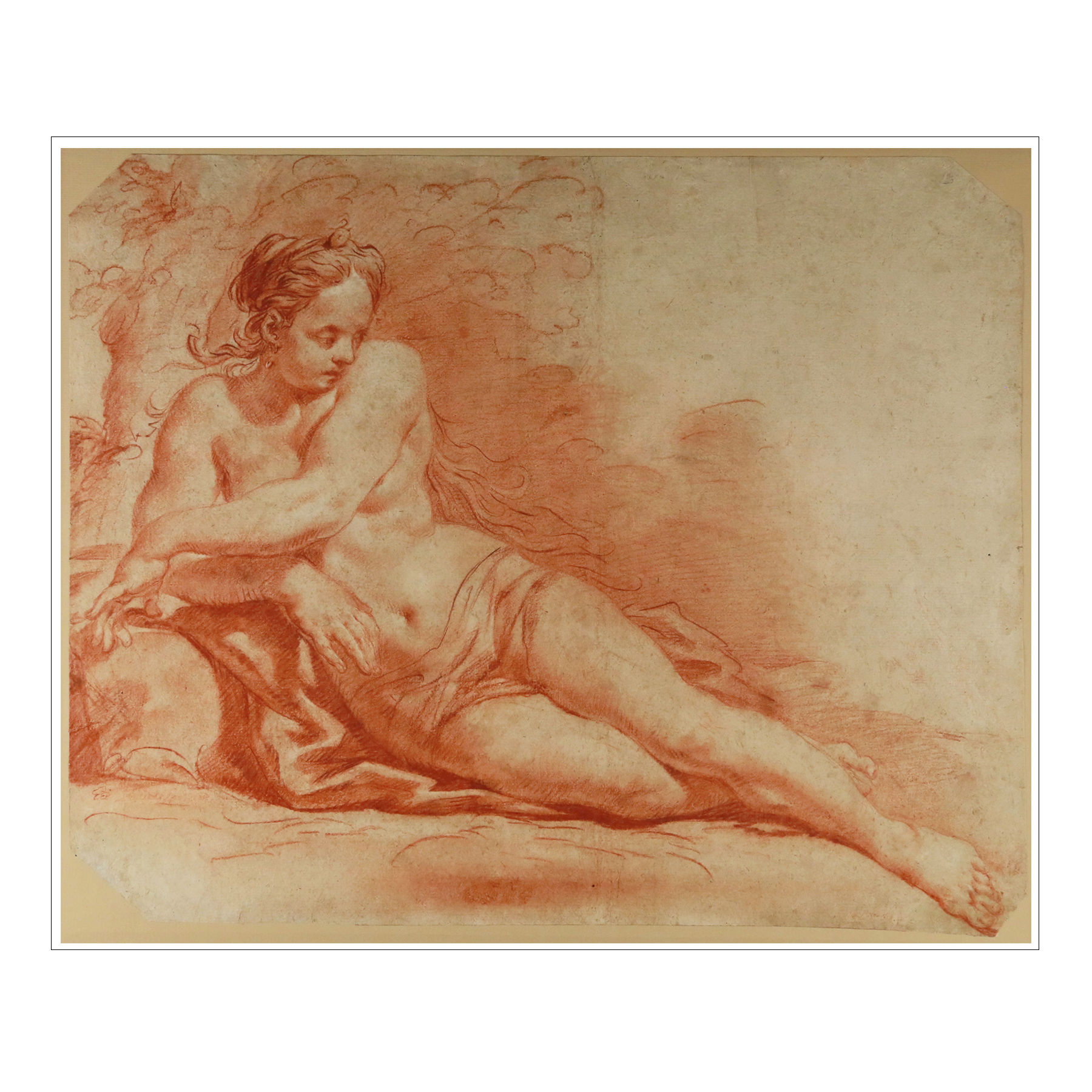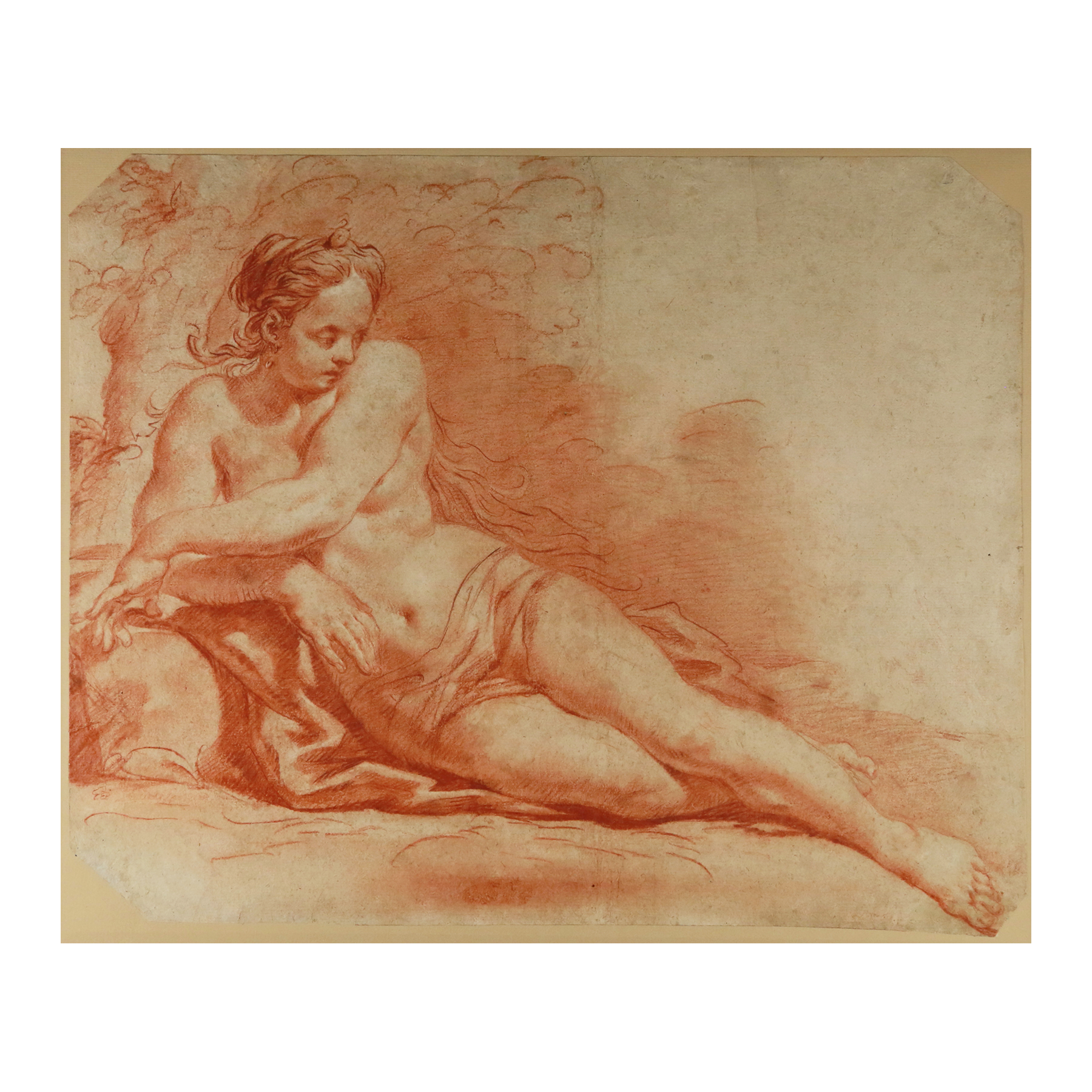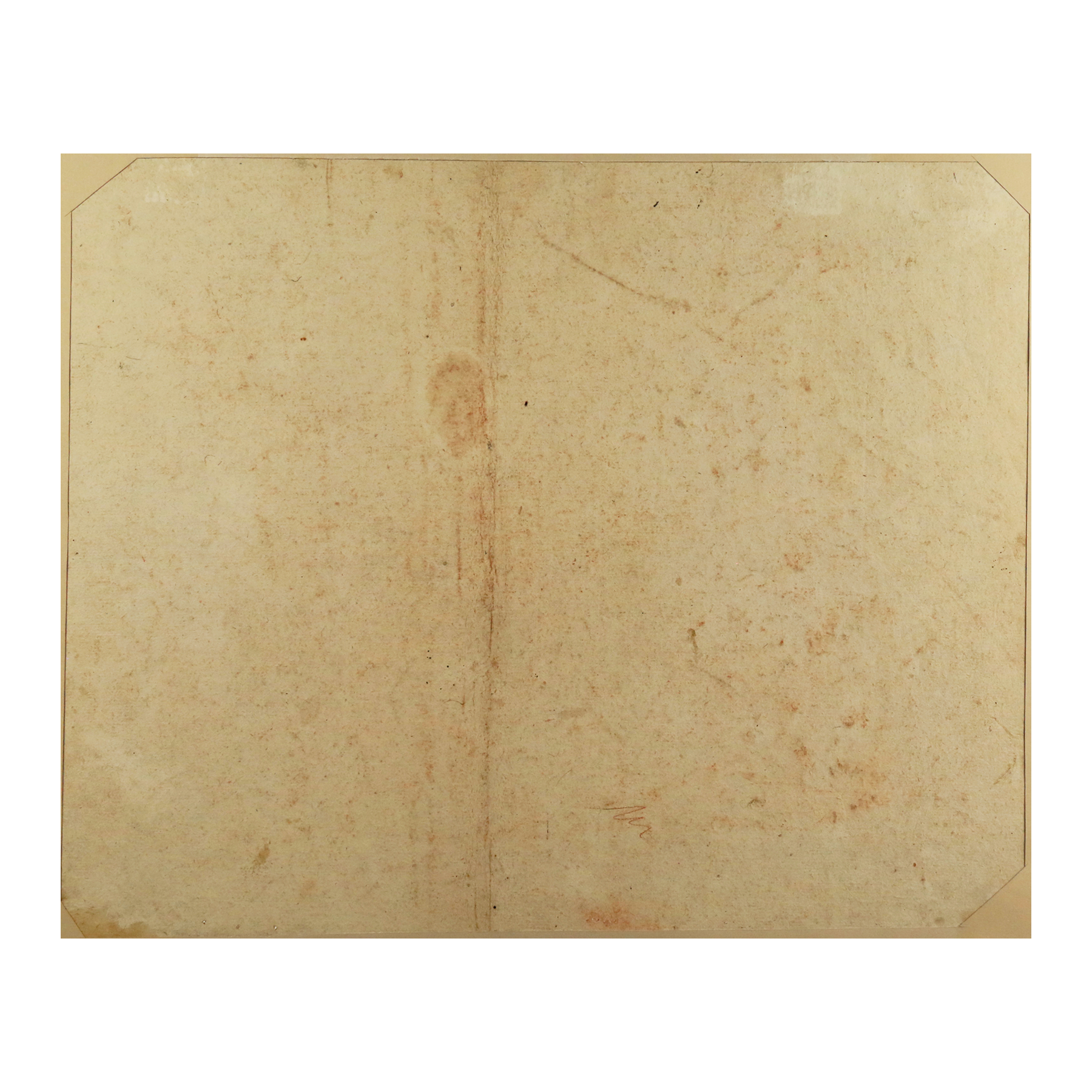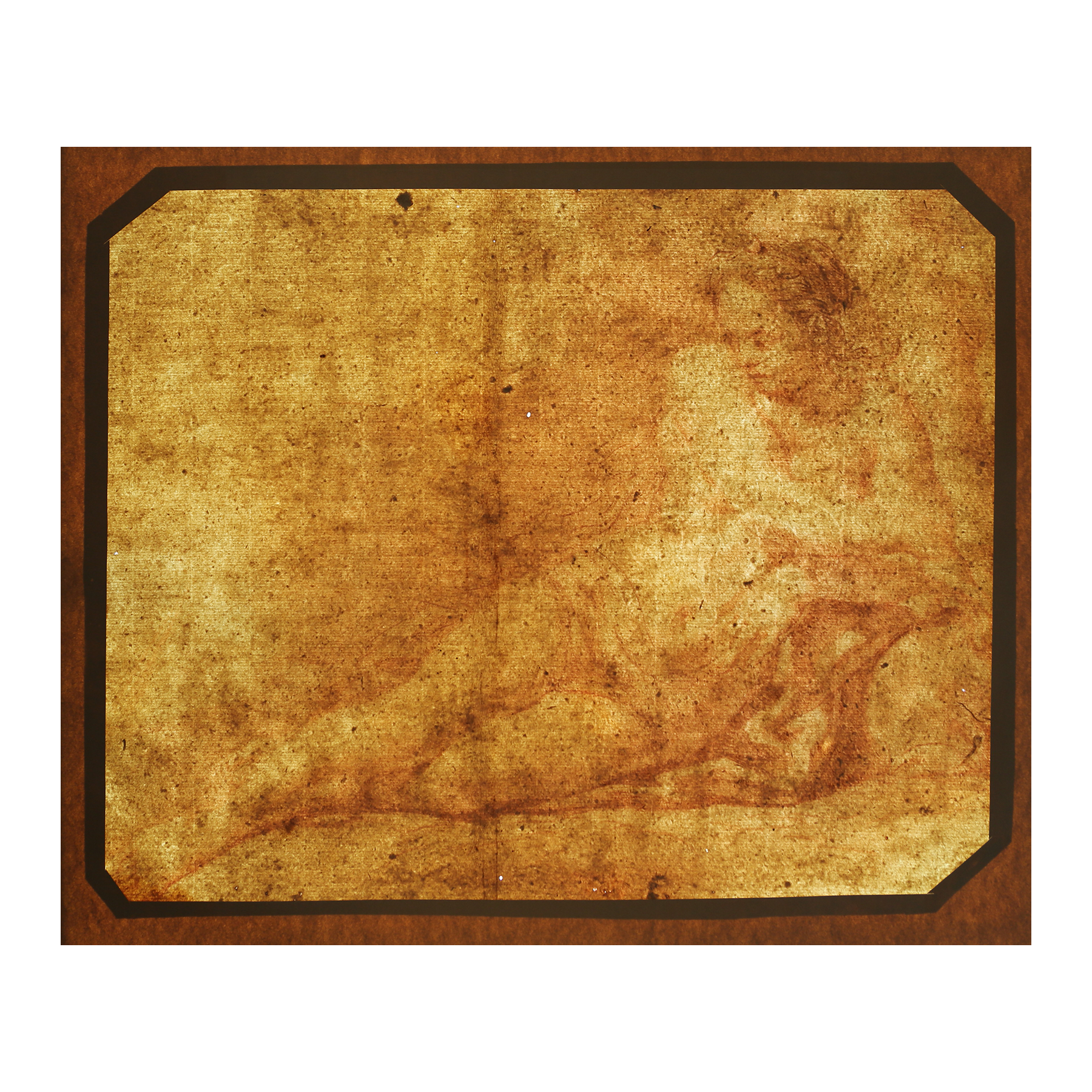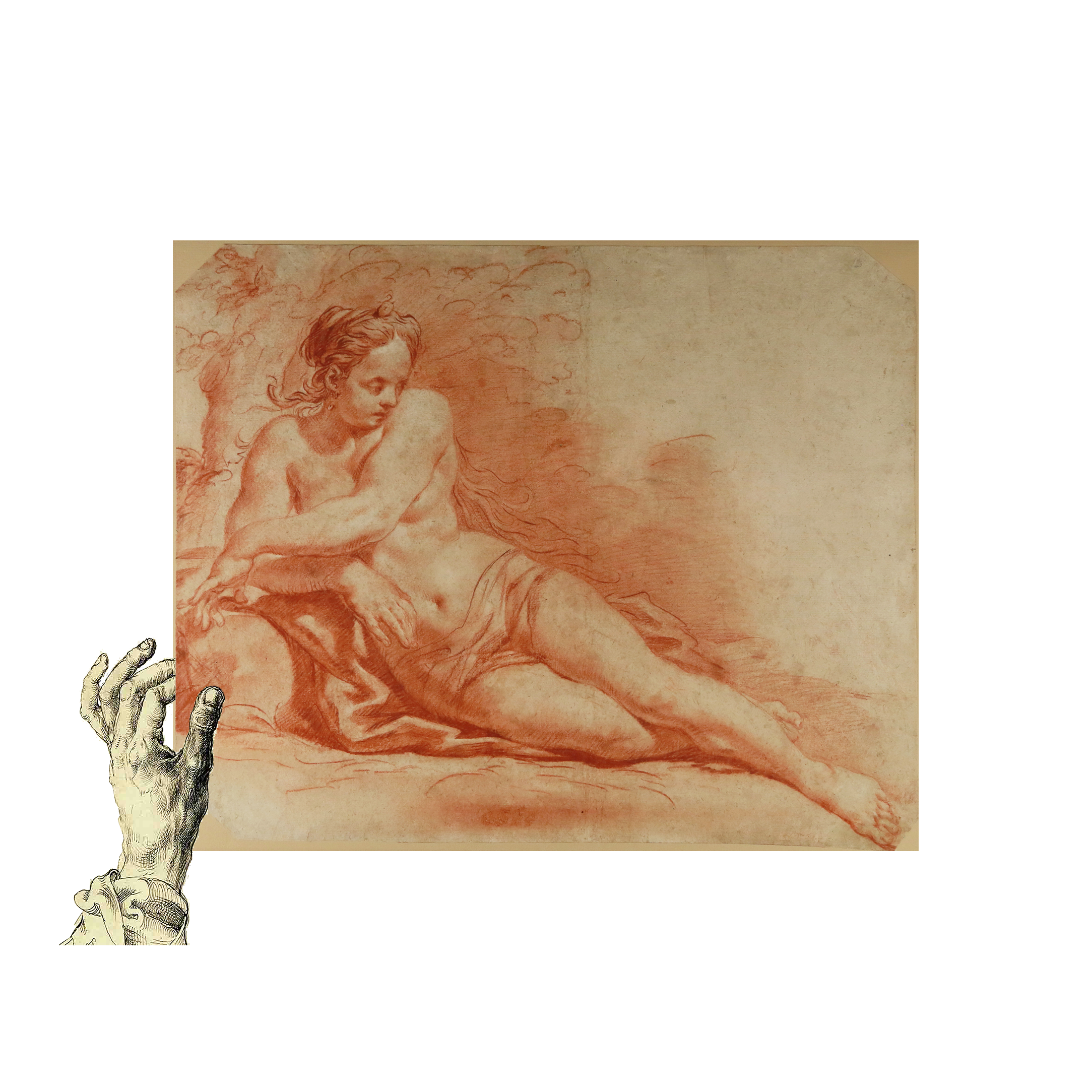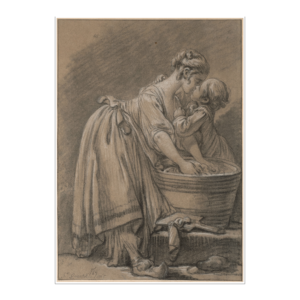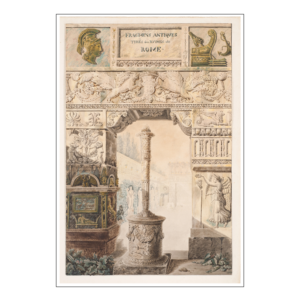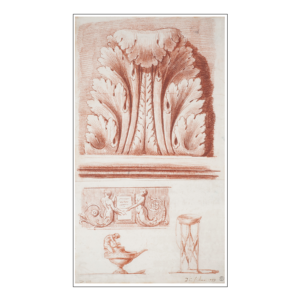Francesco Polazzo
Venice, 1683 – 1753
Study of a reclining nude woman
Red chalk and red chalk wash heightened with white on yellowish paper
422 x 522 mm – 16 5/8 x 20 9/16 in.
Cut corners.
Inscribed lower left: di Giov. Piazzetta
Watermark: three crescent moons
Provenance: New York, Christie’s, January 25, 2007, No. 36.
Bibliography: Profili del Mondo. Il racconto naturale e l’umano paesaggio, Museo di Rimini, Modulgrafica Forlivese, Forli, 2016, p. 182-183, no. 54, ill. 54.
Born in Venice in 1683, Francesco Polazzo received his first artistic training in Bologna, studying the works of Cignani, Reni, Franceschini and Canuti, before returning to Venice in 1710. In 1716, he was registered with the brotherhood of painters of Venice (Fraglia di Pittori) where he came into contact with Sebastiano Ricci and Giovanni Battista Piazzetta. His activity takes place mainly in Venice where he carries out religious commissions for the Chiesa dei Servi (now destroyed), the Chiesa San Tovaso (Christ and the Centurion), and the Chiesa di San Simeone Piccolo. In Bergamo he painted four canvases for the sanctuary of the Madonna dei Campi. His presence is also noted in Brescia between 1736 and 1738 at the Duomo, at the Chiesa Coro di San Giuseppe and the Chiesa Sant’Alessandro
The present female study can be compared to a series of similar nudes drawn in red chalk by Francesco Polazzo on paper of the same size, all kept in the drawing room of the Castello Sforzesco in Milan: Reclining female nude seen from the front, Reclining female nude from behind, Reclining Female Nude Leaning on Her Hand, Seated Female Nude Near a Rock and Study for a Saint Sebastian)[1]. These five drawings, one of which is signed, form the core of Polazzo’s graphic corpus. Like our drawing, they were previously attributed to Piazzetta and then returned to the artist’s graphic corpus by Precerutti Garbieri.
The artist used a watermarked paper with three crescent moons dating from the first half of the 18th century in Venice, which is often used for the drawings of Francesco Guardi and Giovanni Battista Tiepolo.
[1] Inv. n° D223/2, D223/3, D223/4, D223/5, D223/21.
